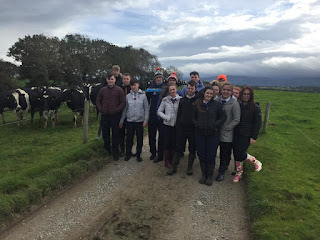Some of the details to be covered in write up for project along with photographs.
- 88 Holstein Friesian cows
- Supply Aurivo Dairies
- AI is used on farm for all cattle
- Milking Interval
- Calving Interval
- Grading up
- Dairy Hygeine
- Grassland Managment
-Lactation period
-Lactation Yield
Please go through these calendars for both Spring and Autumn Calving herds and be aware of
when and why you carry out all tasks. I have highlighted particular jobs which you need to know the reasons why you do them. Jobs for both cows and calves are listed.
These guidelines are sourced from the Better Beef Farm's Health plans.
These can also be used as a template for your project if you are focusing on Beef.
Click on image to enlarge
Photos from today's experiment on the effect of light rate on Photosynthesis. Please watch the clip below to revise.
The results from the soil sample taken in October 2017 from our first Field trip have came back. Please open to the document to see more clearly.
I have edited so as to highlight the areas important for your Ag project. The have a yellow star beside it.
Key terms -
pH - the acidity of the soil. Ideal pH for grass is 6.3 Can be improved by adding lime. On our farm all fields could do with some addition of lime. One field in particular needs particular attention. Which one? We will apply lime to this field over the course of 2 years as you should never apply more than 2 tonnes per acre in any one application as this will badly affect soil structure.
LR - Lime requirement
P and K - The phosphorus and potassium levels are graded on an index from 1 to 4 with 1 being the lowest. It is advised that all grasslands should be at index 3 to make the best use of all fertiliser applications. We need to address this in most fields. The most cost efficient way is by spreading slurry and FYM though we may use a compound fertiliser like 18-6-12 to help this.
Overall we have found many benefits from taking this particular soil test.
It highlights nutrient deficiencies in areas of our farm and as such gives us the knowledge how to address it. It must be noted that achieving best conditions in all fields will not be required as our farm has a low stocking rate and as such the input improvement costs need to taken into account when progressing the farm business forward.
Why do you do it
What do you do with the results
Why do it
Concentrates
Why does the farmer do it
Give examples of different types of measures in GLAS
 Tuesday, November 20, 2018
Tuesday, November 20, 2018









